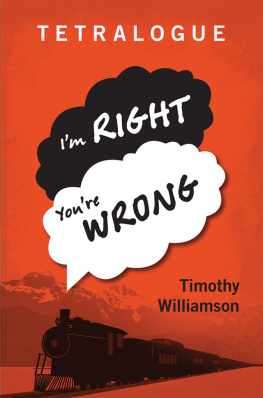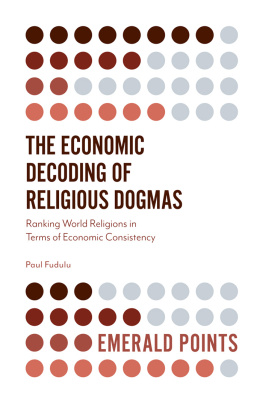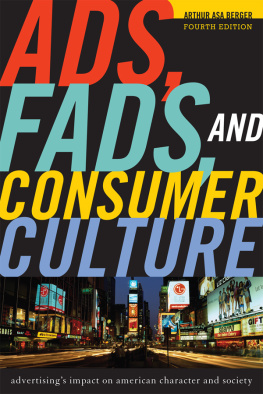When Im drivin in my car
And that man comes on the radio
And hes telling me more and more
About some useless information
Supposed to fire my imagination
I cant get no
Satisfaction
When Im watchin my TV
And that man comes on to tell me
How white my shirts can be
Well he cant be a man cause he doesnt smoke
The same cigarettes as me
I cant get no
Satisfaction
I cant get me no
Satisfaction
Mick Jagger and Keith Richard
from IcantgetnoSatisfaction
The reader who wishes to follow me
at all must resolve to climb from
the particular up to the general.
Karl Marx
CritiqueofPoliticalEconomy
I started writing this book in 1976, in a world plastered with glossy images and ringing with catchy slogans: a world where advertising encouraged us to create our identities through consumer goods and relate to one another through the language of our possessions. Over twenty-five years later, I am writing the preface to its fifteenth impression in a world which is, in that respect at least, remarkably similar. The ads on the following pages may seem as retro in style as any film or fashion-spread of the 1970s: a reminder of how rapidly cultural images shift and date. But the process I set out to analyse through them has changed only in its intensity and ubiquity and the need to understand it and challenge it is more pressing than ever.
Certainly ads themselves change all the time, both in content and style: they reflect social developments (more women behind the wheel, more men in the kitchen) and also the subtler shifts in media self-consciousness that are often labelled postmodern. An increasing number of ads either use self-denigrating images or play at undermining their role (for example, the soft drink ad that claims Image is nothing Obey your thirst) and it has become commonplace to assume that this shows advertising has become more sophisticated, its audiences more knowing, over the past few decades. Of course, the 1970s ads seemed more sophisticated and knowing than those of the 1950s. Each era likes to think it has moved on, and this is built into the very structure of advertising: ads must always appear up to date, as new products must constantly appear to supersede old ones.
But while they may look different now from a quarter of a century ago, ads still perform the same function, and in fundamentally the same way. Where once they might have shown a sophisticated, knowing consumer using a product, now they may incorporate the sophistication and knowingness into their own imagery: a tactic developed especially with cigarette and drinks ads, where picturing consumption is limited by law (see Chapter Eight). However, this is just another way of doing basically the same thing. Advertisements role is to attach meanings to products, to create identities for the goods (and service providers) they promote: a process today described as branding. The fact that this has become one of the hot issues of our time shows that while advertisings basic purpose has changed little since I wrote this book, the context in which it is understood and discussed has changed enormously.
A marker of this change is the success of Naomi Kleins powerful book NoLogo (published in 2000). Klein speaks for a generation growing up in what she calls a new branded world, where advertising has penetrated beyond the media into schools, sports and public life: where the use of logos means that every product can be its own ad, the Nike swoosh on a garment turning it into corporate publicity simply by being worn. This is a world where some children suffer desperately if they go to school without the right symbol on their trainers, while thousands of miles away, other children suffer desperately making them. NoLogo is a passionate indictment of this situation: it charts the rage of young people in the First World, at a parasitic corporate culture that steals their cool, while, importantly, it also investigates some of the labour conditions in the Third World under which corporations manufacture those cool goods in the first place.
NoLogo grew out of the anti-capitalist movement, and anti-capitalism has grown in part as a response to developments within capitalism itself. Consumer culture has certainly intensified over the last twenty years: in 1980s Britain and North America the deliberate rolling back of the State by right-wing governments encouraged capital to increase its hold in the public arena, and the marketplace became the model for public as well as corporate institutions. Branding and logos now seem to be everywhere, and business is increasingly global: companies operating across continents become harder to pin down under national legislation, and the trend towards subcontracted labour releases corporate employers from responsibility towards their workforce, which can be treated as expendable.
All this happens, and it is morally wrong; and the emergence of a movement that makes its voice heard around the world saying so is utterly welcome. Back in 1976, although Marxists talked about capitalism, hardly anyone else did: in Western societies it was generally taken as a given, the backdrop to our way of life. Today we have international debate about globalisation, branding, the impact of capitalism on the very future of our planet there is a public language available for opposing this politically unjust, materially exploitative, spiritually crushing system which is neither a natural nor an inevitable mode of conducting human affairs.
And yet, sometimes just saying something is wrong even though it is isnt enough. We need to understand how the system works: which is where theory and analysis play a crucial part. Anti-capitalism hasnt made Marxism redundant it has made it still more necessary, as a theoretical framework that analyses capitalism as a dynamic, and seeks to understand the way it works. A Marxist perspective enables us to see capitalisms excesses as integral to its structure: how could it not exploit its workforce, and still make profits? And Marxs notion of commodity fetishism has never been more relevant, in a world where relations between people increasingly take the form of relations between things.
These concepts are as topical as ever, and can help us to understand what we now call globalisation and branding which might once have been called economic imperialism and marketing. Fashions in words change, often more rapidly than the phenomena they refer to: this can sometimes provide fresh ways of thinking about the same things. However, it can also give the impression that the world is changing faster than it really is. An example is the rise of the word postmodern: once it came into use, it suddenly seemed we were living in a newly postmodern world but what that meant, let alone whether we really are, remains a mystery. Similarly, branding, though definitely a more widespread phenomenon than, say, thirty years ago, is not a new one, though recent debates may make it seem so. A hundred years before No Logo was published, H.G. Wells wrote the fascinating (and hilarious) novel TonoBungay, which charts the fortunes of a patent-medicine manufacturer building brand identification through remarkably modern methods of advertising and niche marketing. And, of course, the ruthless exploitation of cheap labour is not new either: it is just that the industrial slums are now more likely to be in the Philippines or Indonesia than in Manchester or Detroit.
So while we look for the changing elements in the world around us, we can also learn from seeing the structural continuities. And this is another reason theory and analysis are so valuable: they are tools that can be used and reused, as it were this is in the nature of conceptual, rather than descriptive, systems. Two plus two still makes four, whether you are adding two apples or two tanks: any analysis of a consistent structure will hold true even as the details of its appearance may shift.














